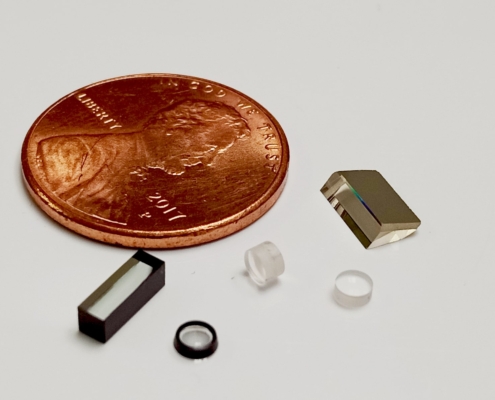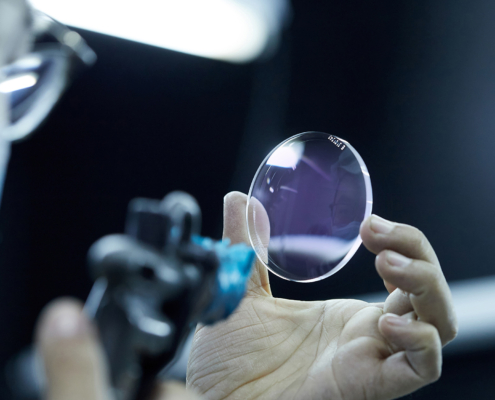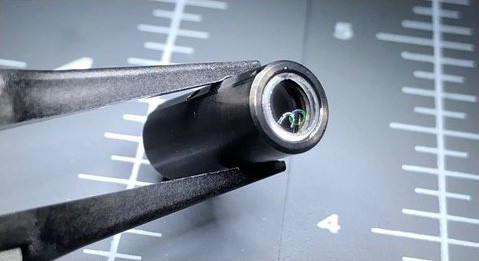As the optics and image sensors used in medical cameras serve as the eye of the doctor using them, the image quality produced by these components are critical. Ultimately, an imaging module’s specification is derived from the device’s end use requirements. An imaging sub-system may contain several lenses, filters, sensors, mechanics and illumination elements packaged in a tight space. As sophisticated imaging-based medical devices are deployed, manufacturers need to guarantee their products meet required performance criteria with specially designed optical test systems.
Optical test systems characterize device performance and include measurements such as field of view (FOV), brightness uniformity, stray light, depth of field (DOF), lens distortion, resolution and modulation transfer function (MTF). They can also “weed out” component defects and detect artifacts such as dust and scratches during the assembly process. In medical applications, the optical systems are designed to very tight tolerances to meet the required performance. If deviations in component or assembly process are not detected, it will likely result in unacceptable performance at the product level.
Established international standards define a process for measuring image quality of digital imaging systems. FISBA uses the ISO standard 12233:2017 which refers to electronic still picture imaging defining quantifying resolution and spatial frequency responses. This method is convenient for medical imaging systems where the lens and image sensor are both integrated into the product. The resulting measurement is a system-level MTF, including the impact of the lens and image sensor in the measurement. Such standards allow engineers to compare and verify spatial resolution measurements. Within this context, we review how DOF and MTF are used to characterize an imaging system’s performance and contribute to an efficient manufacturing process.
Depth of field
A common definition of depth of field is the distance between the closest and furthest points at which the object is in acceptable focus. Depth of field plays a large role in how your desired image is captured and may influence how the image is interpreted by the viewer. You can choose to isolate a subject from its background by having a narrow DOF or ensure that everything from the foreground to infinity is in focus, with a sharp image throughout the entire depth of field.
Why is depth of field important for medical applications?
Image-based medical devices such as endoscopes, arthroscopes and dental cameras share a common sensitivity for achieving a precise DOF. Outside of robotic surgical systems, these devices are often hand-held by the operator. Furthermore, size requirements of the product often limit the ability to integrate focus adjustment into the optical path. Achieving a balanced DOF such that the image is sharp across the entire working distance is achieved through design and measurement of the assembled device.
Modulation Transfer Function
MTF measures a lens’s capacity to transfer contrast across a range of object sizes. In conjunction with the image sensor, it is also related to the resolution of the camera system. MTF is typically quantified as a continuous curve as shown below, where the X axis is frequency and the Y axis the MTF with a maximum of 1. Choosing a frequency at which to specify and measure MTF depends on the particular clinical application. For most applications where the image is viewed by the human eye on a monitor, low to mid frequencies are the most critical to achieving a perceptibly sharp image. Limiting resolution, or where the MTF drops to zero, can be important for more specialized applications such as micro-endoscopes requiring the highest possible resolution. All components within an imaging sub system can contribute to the overall MTF of a system.
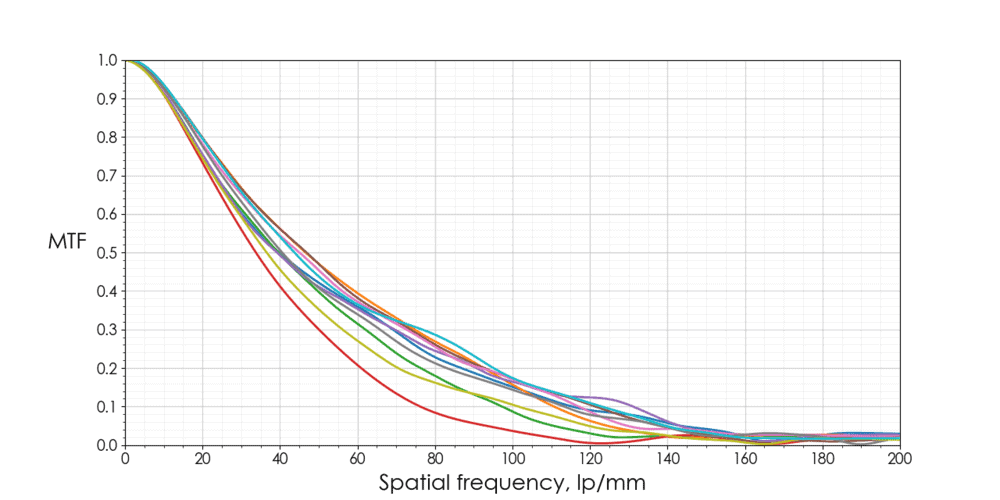
Measuring DOF and MTF
FISBA uses a slanted edge MTF technique as described in ISO standard 12233:2017 to measure optical system performance in a close to continuous curve from the tip of the camera to the furthest distance within the DOF. This approach can be used to set the lens back focal distance to achieve the desired depth of field and confirm that it has been met after full assembly of the camera.
FISBA designs and builds custom alignment and test stations for customers. Operation of the tests can be done manually or fully automated through software. Our capabilities include:
- Allow an operator to iteratively set focus of lens in production (manual lens adjust) – using an automatic depth of field measurement
- Automatically verify DOF & MTF once the lens is bonded
- Direction of view
- Lens distortion
- Image brightness uniformity
- Color response
- Detect blemishes, dust, and scratches
Many small cameras have a fixed focus and the position of the lens with respect to the camera is critical to providing a good image across a range of depths. The graph below shows a lens at an optimized position to balance image contrast both near and far. A shift of only +/-100 um completely shifts the camera performance to either focusing best at close or far. In this example, FISBA designed an optical system and concurrently developed the appropriate test system to meet the performance criteria specified by the customer.
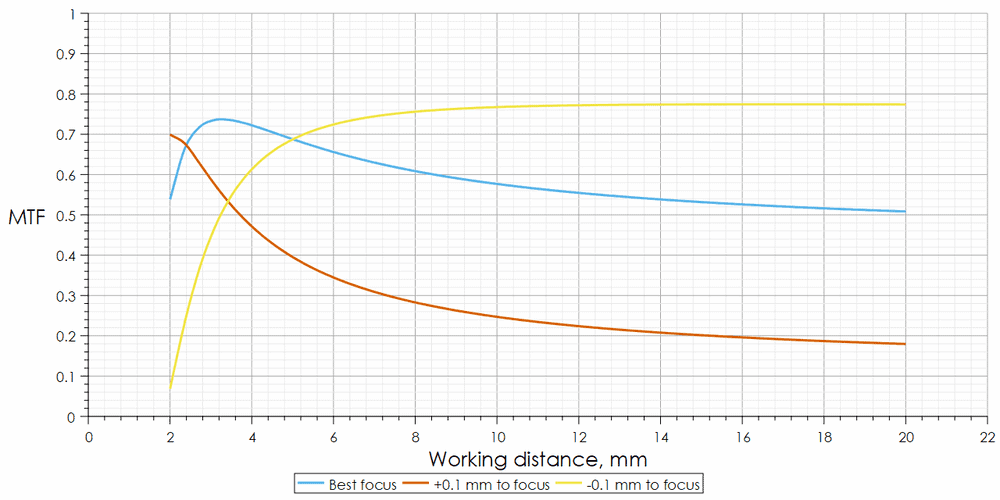
Summary
For imaging based medical devices, manufacturers need to meet stringent performance criteria. Product performance depends upon the integration of optical components at the system level. Test systems need to be robust and flexible to characterize and verify various levels of performance criteria at the component and system level.
To discuss your next imaging based product development effort, contact FISBA.


